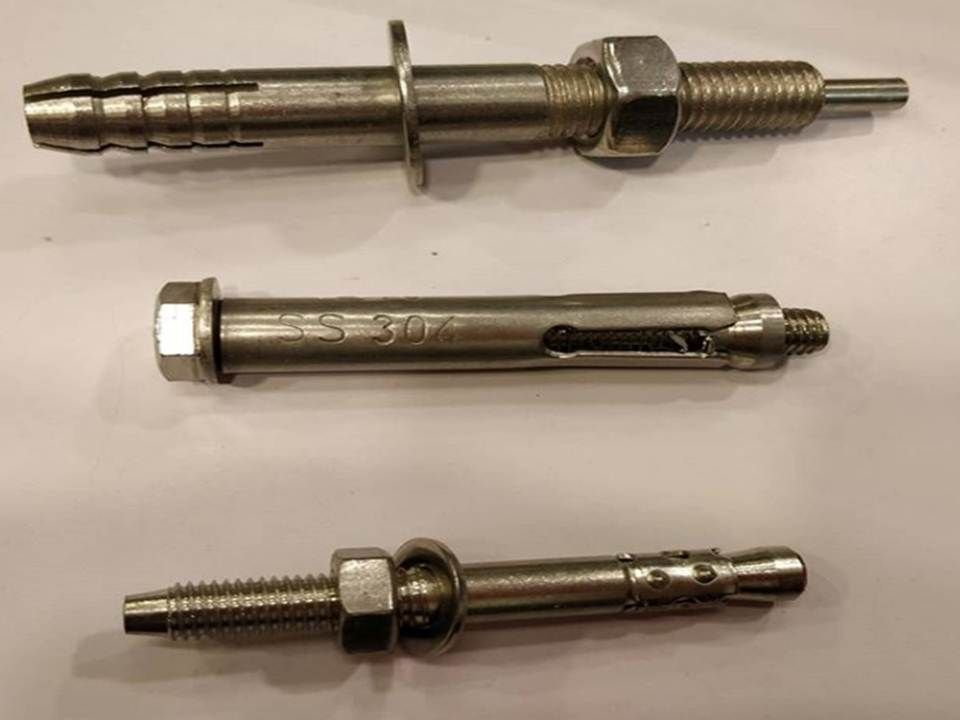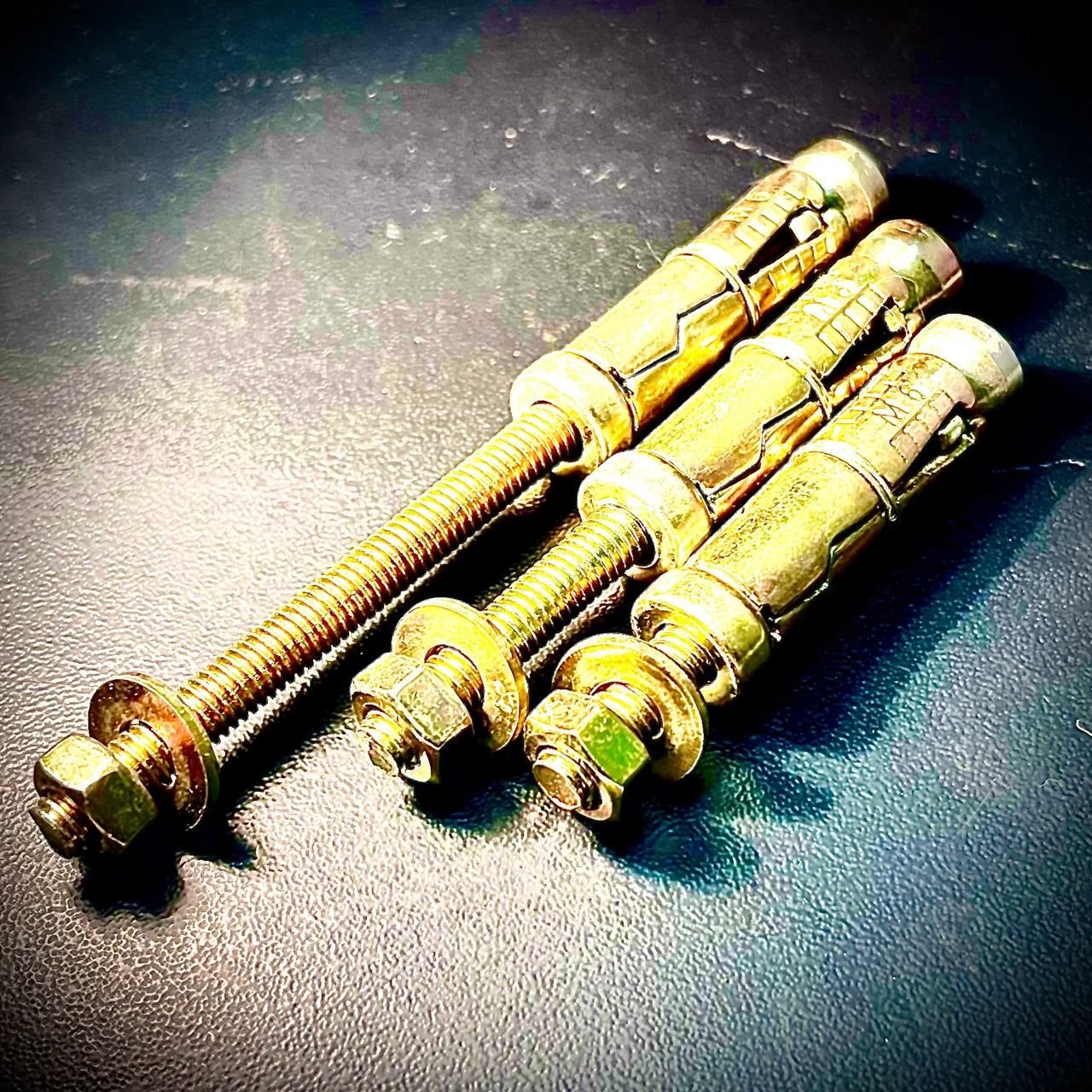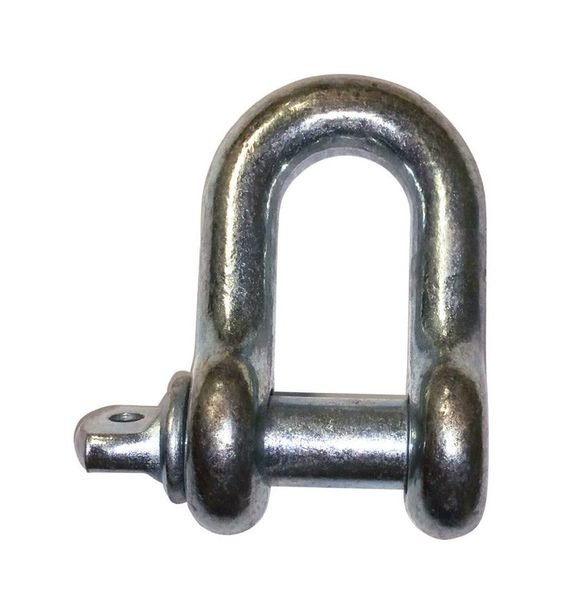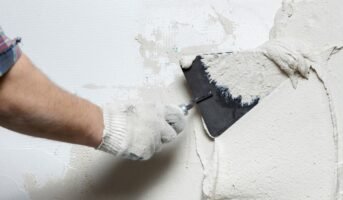Anchor fasteners, as the name suggests, are used in the residential and industrial construction industry. They are often used to attach anything to base materials like concrete or brick. They are often inserted in the base material by drilling holes and securing themselves tightly in place. Anchor fasteners are adept at handling shear and pull-out forces with ease, ensuring that the assembly stays intact, no matter what.
Types of anchor fasteners
1. Wedge-type anchors
Wedge-type anchors have varying threading patterns throughout their bodies. The anchor’s head is a circular expansion clip with undercut grooves that are firmly attached to the body of the device. These anchors are made of stainless steel, carbon steel, or alloy steel, which makes them incredibly sturdy and suited for use in harsh temperatures.
They have exceptional corrosion resistance as well. The diameter of the head must be measured first, followed by the length of the anchor above the material surface, to evaluate the hold of these anchors. The appropriate anchor with its threads should have this length subtracted from it. This can be used to assess whether the anchor has been installed appropriately by comparing it to the embedment length. The main purpose of these fasteners is to secure objects to a concrete base. Consequently, they have more strength, which increases their capacity for bearing loads.

Source: Pinterest
2. Threaded shield anchors
For fixing parts in concrete, threaded shield anchors are used. They have more strength as a result, which improves their capacity for bearing loads. Special equipment is needed to secure shield anchors to the concrete since there is a great likelihood that the concrete may crack under intense strain. Applications where the assembly is subjected to extreme shear stresses, vibrations, and side pressure are suitable for these anchors.
Double expansion shield anchors and lag screw expansion shield anchors are two of the various shield anchor kinds that are available. Single expansion shield anchors are a fantastic choice if you are unsure of the holding power of a soft or unknown material because they do not harm the surface being used and still offer a good level of hold.

Source: Pinterest
3. Pin-type anchors
The interior of pin-type anchor bolts has holes that can go all the way around the anchor. The driving pin is placed into the upper part. Additionally, that is where the threaded anchor is placed. These pin-type fasteners employ the friction-locking concept to support loads. Corrugations on the exterior surface may be used to prevent spinning and provide proper balance. They often take the form of dichromate that has been zinc-plated. In soft brickwork, pin-type anchor bolts are used to lessen the impact of pressure and vibration.
The ability to replace these bolts without compromising the anchor system’s holding power is their main benefit. Without having an impact on the area immediately around its impact, its application can be extended to harder materials like stone, concrete, and bricks. Pin-type anchor bolts are also used in applications that call for higher pull-out values.

Source: Pinterest
4. Wall plug anchors
Wall plugs are plastic parts that allow screws to be fastened to walls. It is utilised in situations where a screw needs to be fastened to fragile materials that cannot hold the load on the screws. Wall plugs are frequently installed in walls to help sustain the load on the screws. Although these plugs can be made of a variety of materials, plastic is frequently chosen because of its softness.
These wall plugs are easy to install and basic. They are placed into the pilot hole with room to spare, and the centre screw is tightened. The plastic tightly encloses the screw after it has been screwed into the plug. The fact that these screws may be accurately used for larger sizes of screws while having different diameters is another benefit of using them.

Source: Pinterest
5. Rawl anchors
A general-purpose anchor bolt for usage in concrete, stone, and brickwork is the Rawl bolt. It forms a strong bond with the substrate to create a high-performance fastening that aids in load distribution and transfer, and is then fastened by turning the appropriate torque. The usage of these anchors for huge buildings proved to be both inexpensive and simple to install when bought in bulk. It is offered in stainless steel, carbon steel, and alloy steel to withstand more abuse and increase its corrosion resistance.

Source: Pinterest
6. L and J bolt anchors
Despite being predominantly associated with the construction sector as the real heroes, foundation bolts like the L and J bolts have applications across many other industries. These bolts are made up of pre-threaded bars with unique slashings. These bolts are available in a wide variety of sizes, ranging from ten inches to as much as eighty inches. It is offered in stainless steel, carbon steel, and alloy steel to withstand more abuse and increase its corrosion resistance.

Source: Pinterest
FAQs
What is an anchor fastener?
In constructions and buildings, anchor bolts are used to join structural components made of base material to masonry and concrete. To install them, a hole must first be drilled in the base material. The fastener's hole is just a little bit bigger. Following that, the anchor is properly placed inside the hole.
What distinguishes an anchor from a fastener?
A fastener is a tool used to make non-permanent couplings between two or more things by mechanically joining them. Anchors aid in fastening a fixture to a solid concrete slab or perhaps a hollow wall. Different types of fasteners include nuts, anchor bolts, screws, clips, etc.
| Got any questions or point of view on our article? We would love to hear from you. Write to our Editor-in-Chief Jhumur Ghosh at [email protected] |
Housing News Desk is the news desk of leading online real estate portal, Housing.com. Housing News Desk focuses on a variety of topics such as real estate laws, taxes, current news, property trends, home loans, rentals, décor, green homes, home improvement, etc. The main objective of the news desk, is to cover the real estate sector from the perspective of providing information that is useful to the end-user.
Facebook: https://www.facebook.com/housing.com/
Twitter: https://twitter.com/Housing
Email: [email protected]











